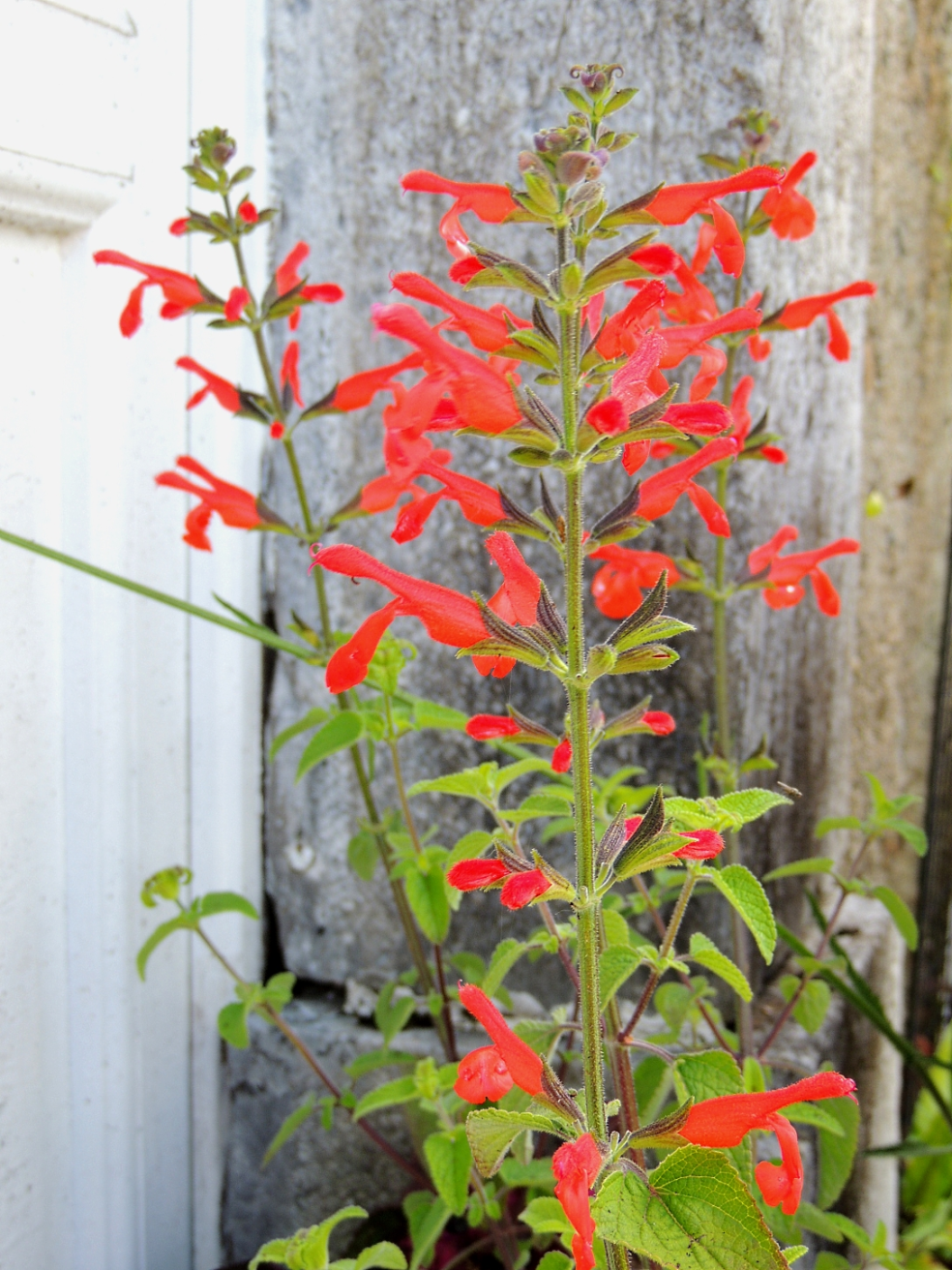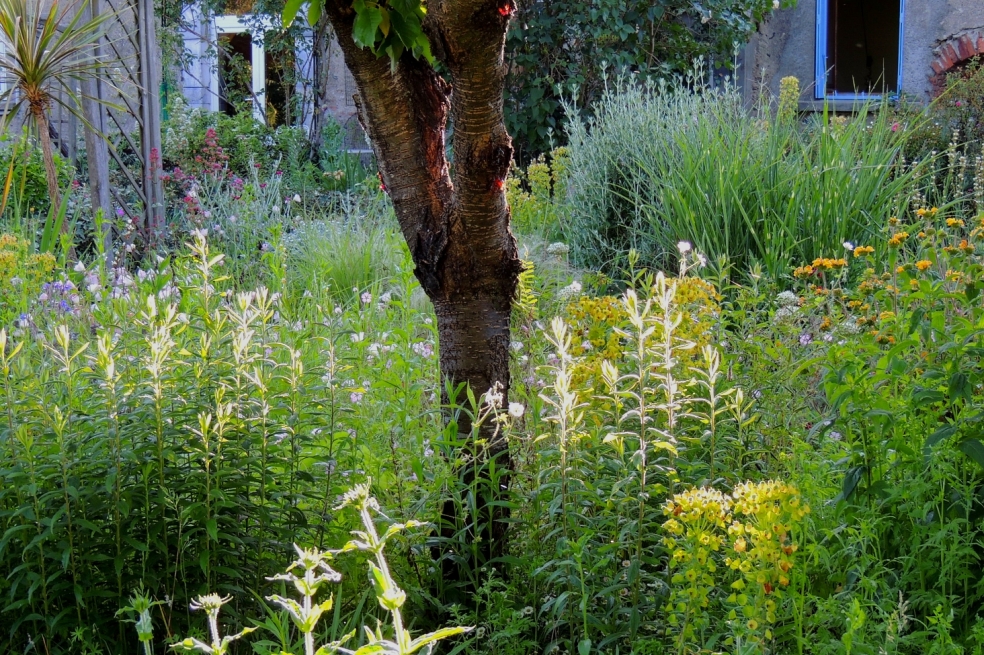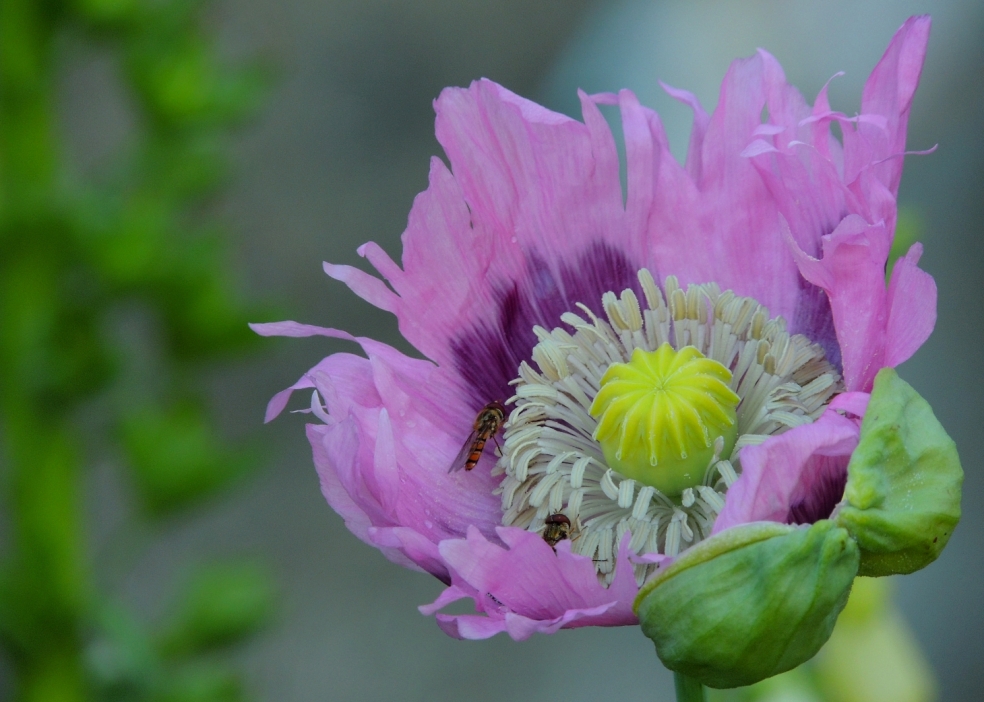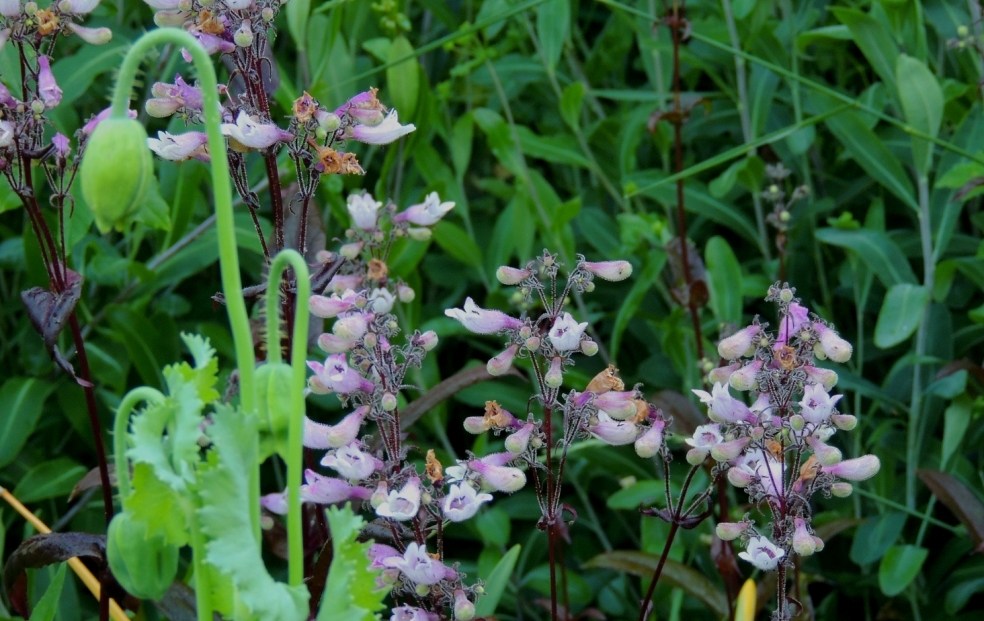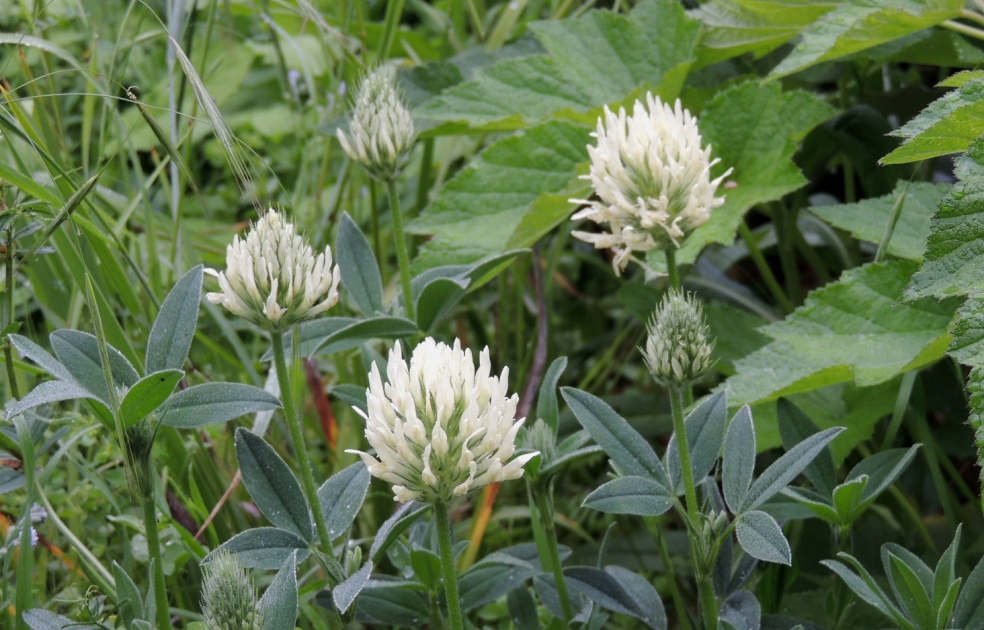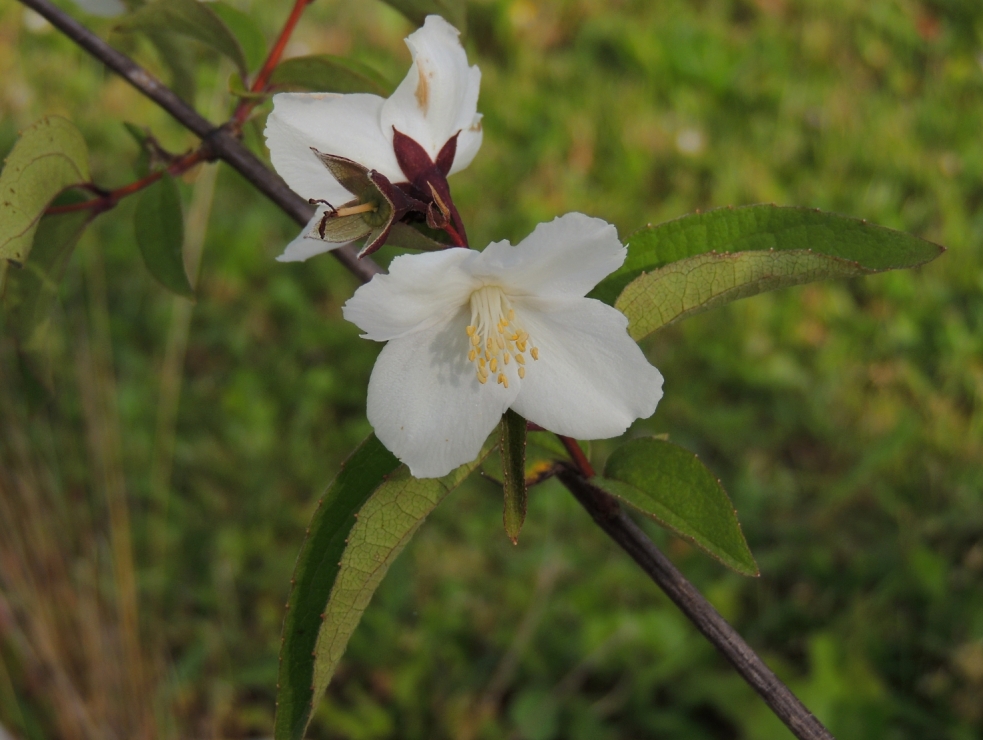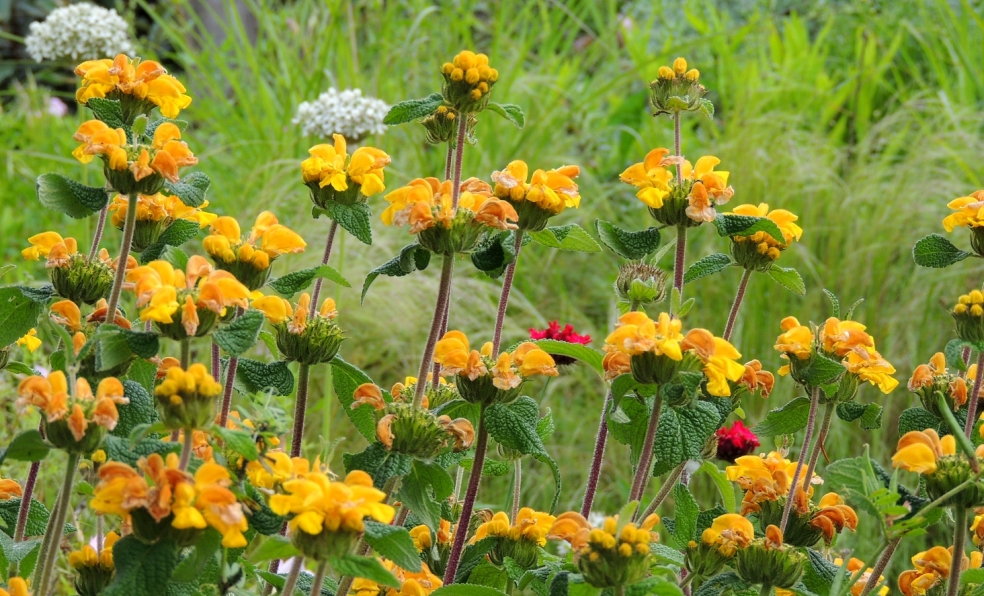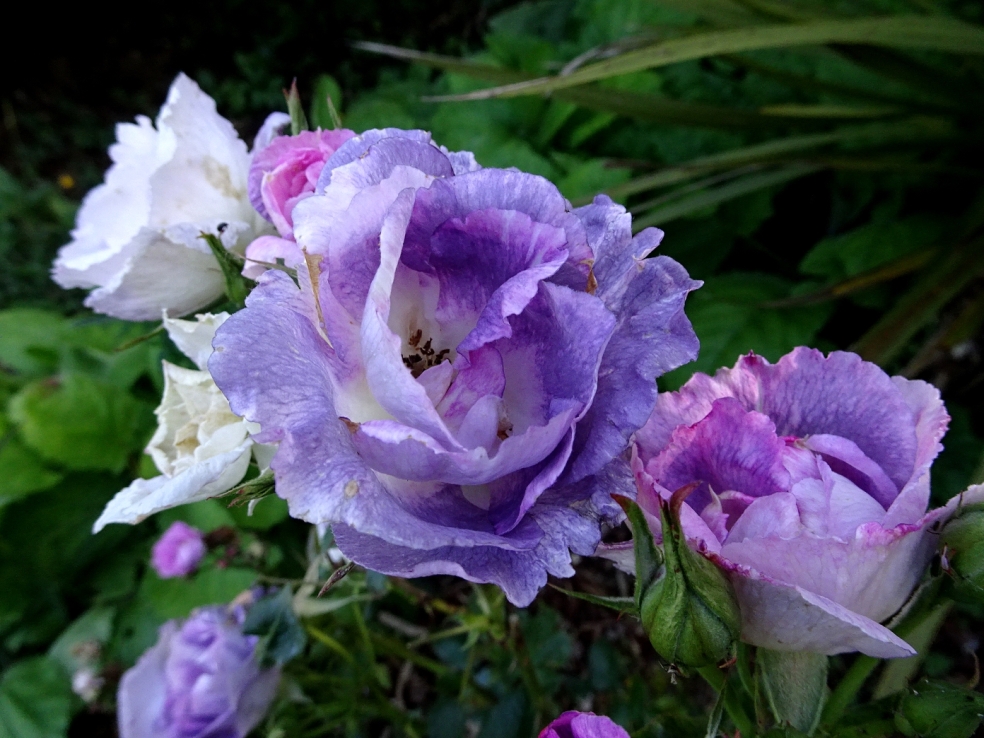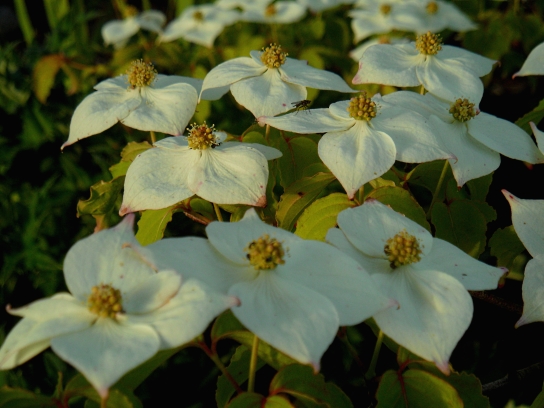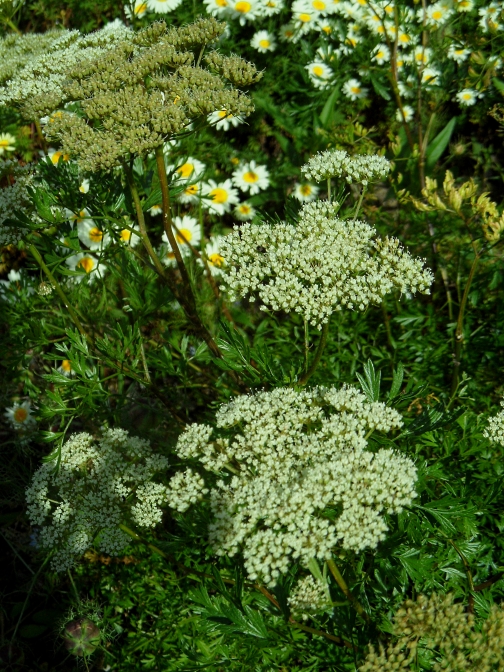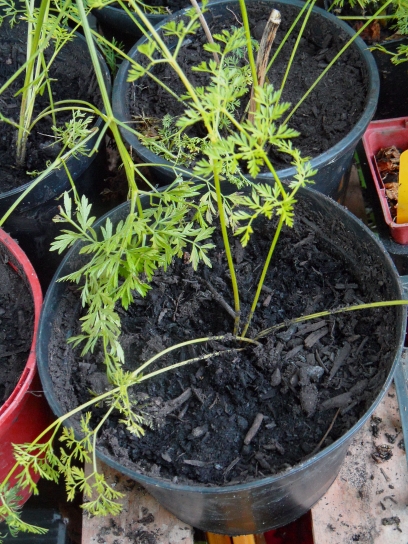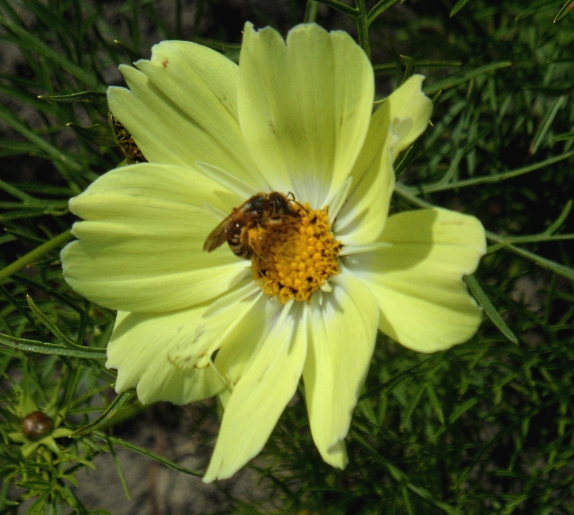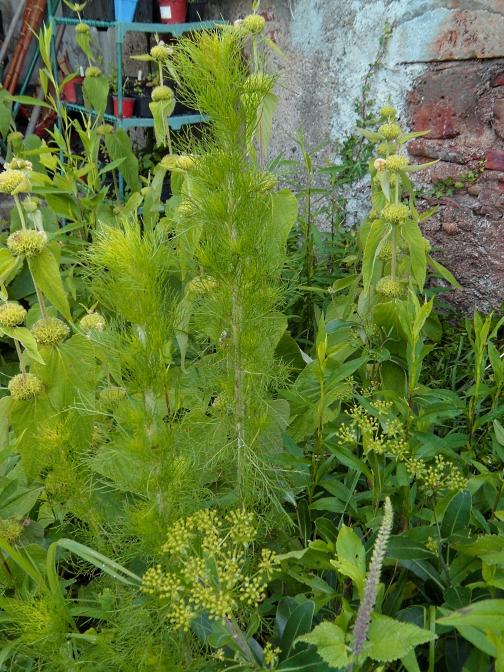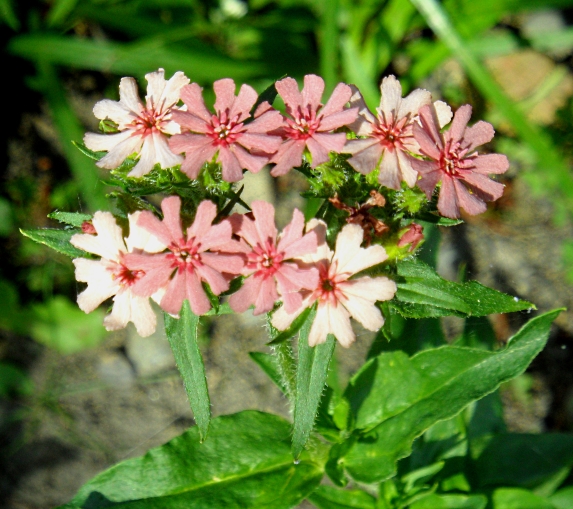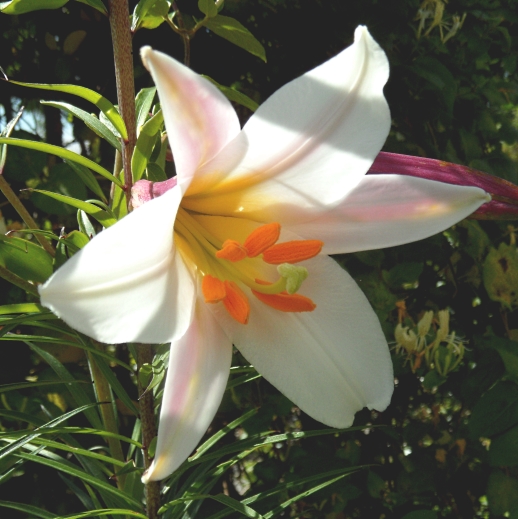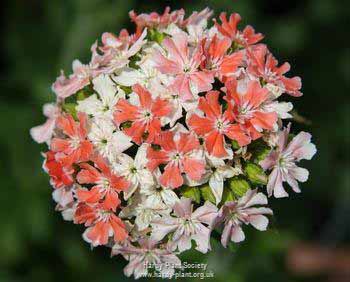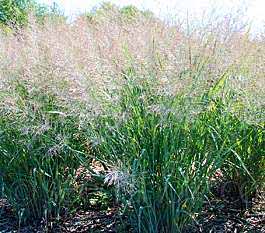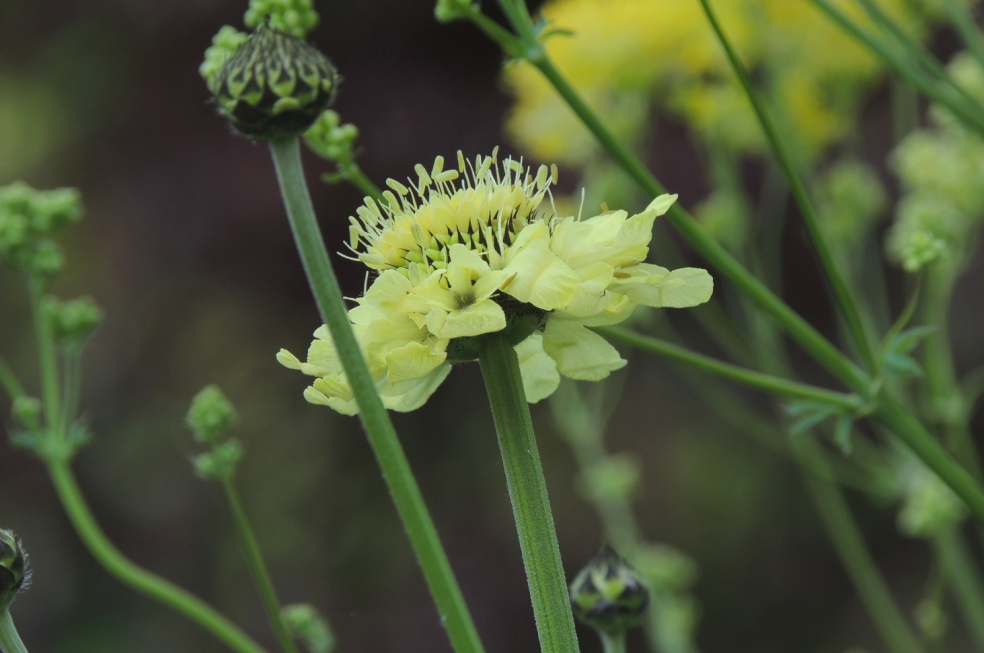
Two years ago, at this time of year, we joined in with the ‘Gardens in the Wild’ festival in Herefordshire, and visited about half a dozen gardens over the weekend. So many good things to see and plants to take in- one of which popped up in various of the gardens, and I adored it. Cephalaria gigantea won my heart, for slender but tall stature and creamy lemon flowers. Insects adored it, and so did I. From seed, it has taken me two years to get flowering plants- they grow so high that I would need a ladder to look down into them, and so you can imagine, two years is what it takes to build up a solid root base. Unknowingly, I mixed them in with seedlings of Thalictrum flavum glaucum– but I think that the two giants get on rather well. They are in the most moist part of the garden, so this summer will tell if they can take it.

Dorycnium hirsutum ‘Frejorges’ is a slow-burn plant. Needing sharp drainage, full sun and poor soil to do best, I was not bowled over it by intially. But, growing slowly over 2 years, to make a crinkled silvery-green mound, and this year, flowering for the first time (unless I just have forgotten) with creamy pea-type flowers, it has earned it’s place in the garden.

The best bit from Jardin de la Poterie Hillen last week was….this view. It was jammed with people- note to self, don’t bother with Portes Ouvertes days, find another time. I really liked the shaped shrubs, the bench, the slim cypresses behind, the lilypad bowl and the three weathered uprights that sounded like metal, but felt quite light to the touch. Material therefore unknown. I also liked this rather florid clematis- baroque swags of flowers absolutely saved by their cool creamy green colouring, Clematis florida Alba Plena. A good combination. On the list.

Back home, the trooper plants are blooming. Both are Lychnis, the top one, Salmonea, I grew from seed a few years back which I got from the Hardy Plant Society and it is just beginning to self-seed gently in the mixed planting under the cherry tree. The bottom one is the more common, scarlet chalcedonica– which I also grew from seed, and it gives a real flash of scarlet. Nothing demure about it at all. Easy and tough as old boots.
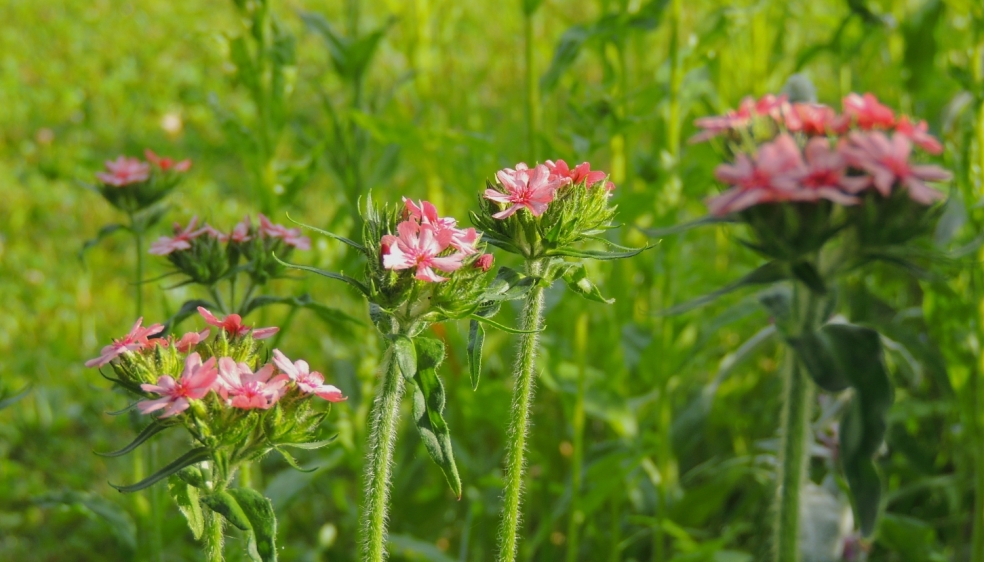
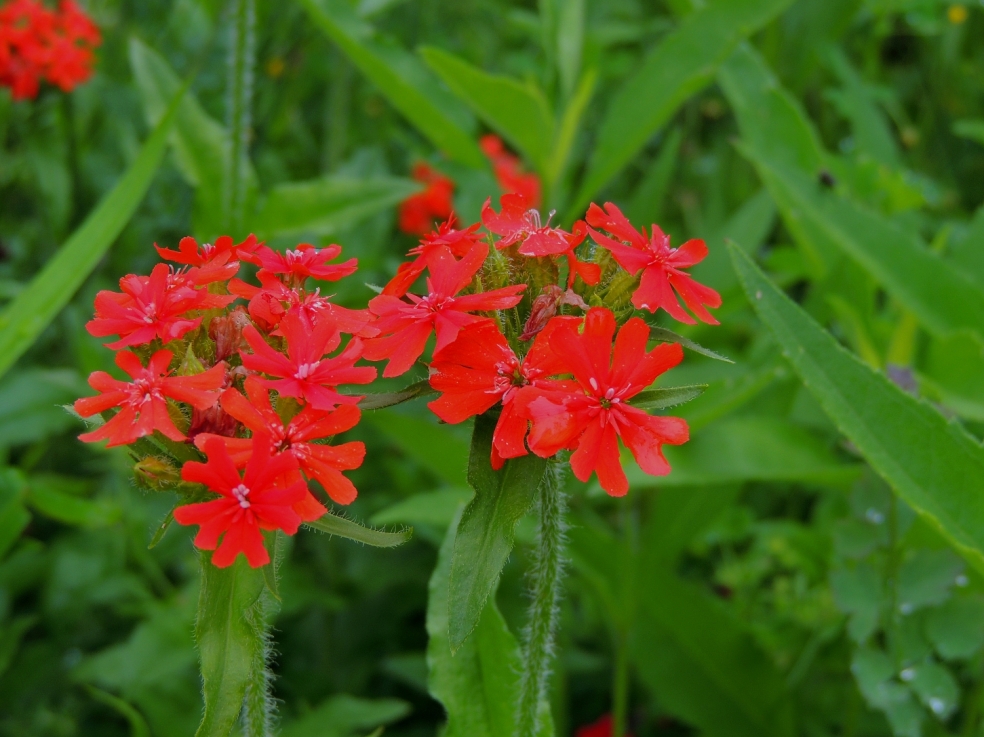
In the Mix, the alliums are over but still making a great vertical against the Stipa tenuissima. In the morning light, the effect is magical, golden, slender, wafting against the green of the emerging Miscanthus sinensis Strictus– not yet producing the golden zebra stripes that I love. The Miscanthus has been waiting for heat so far this summer.
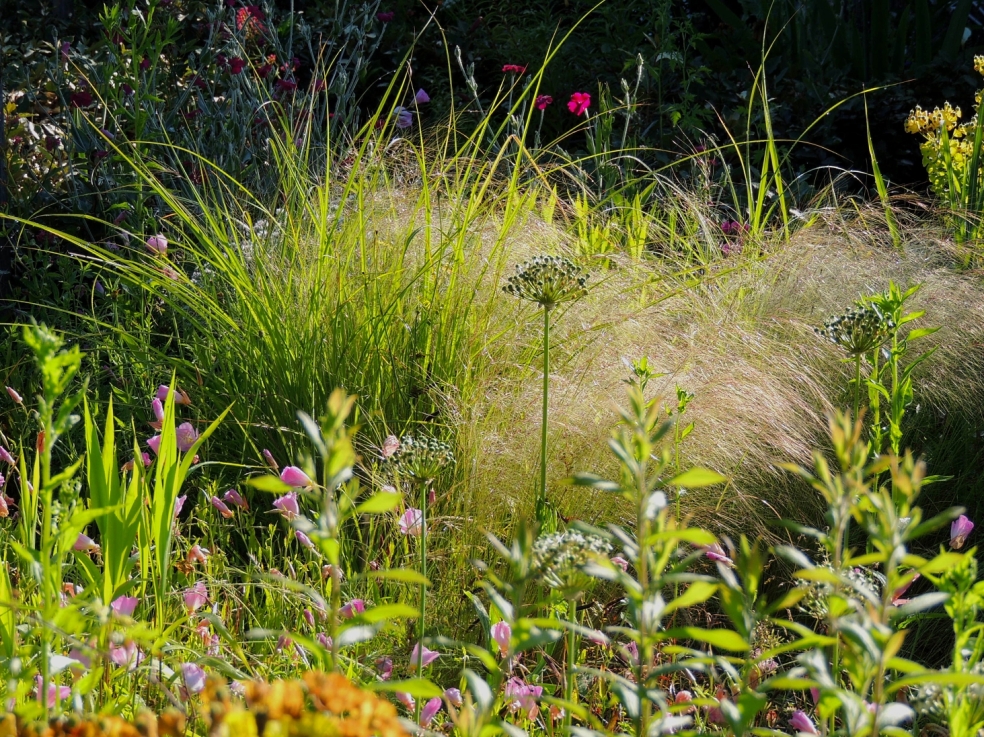
In the cool, semi-shady conditions of the Bee garden in Peebles last month, self-sown and spreading Camassia leichtlinii, don’t know the variety, were taking over beautifully from the Scottish bluebells. My friend has them planted in and amongst a crimson-leaved acer, and the light filtering through the acer picks out the Camassia beautifully. Irresistable. But they must be resisted. Tostat would bring certain death to moisture-loving Camassia.
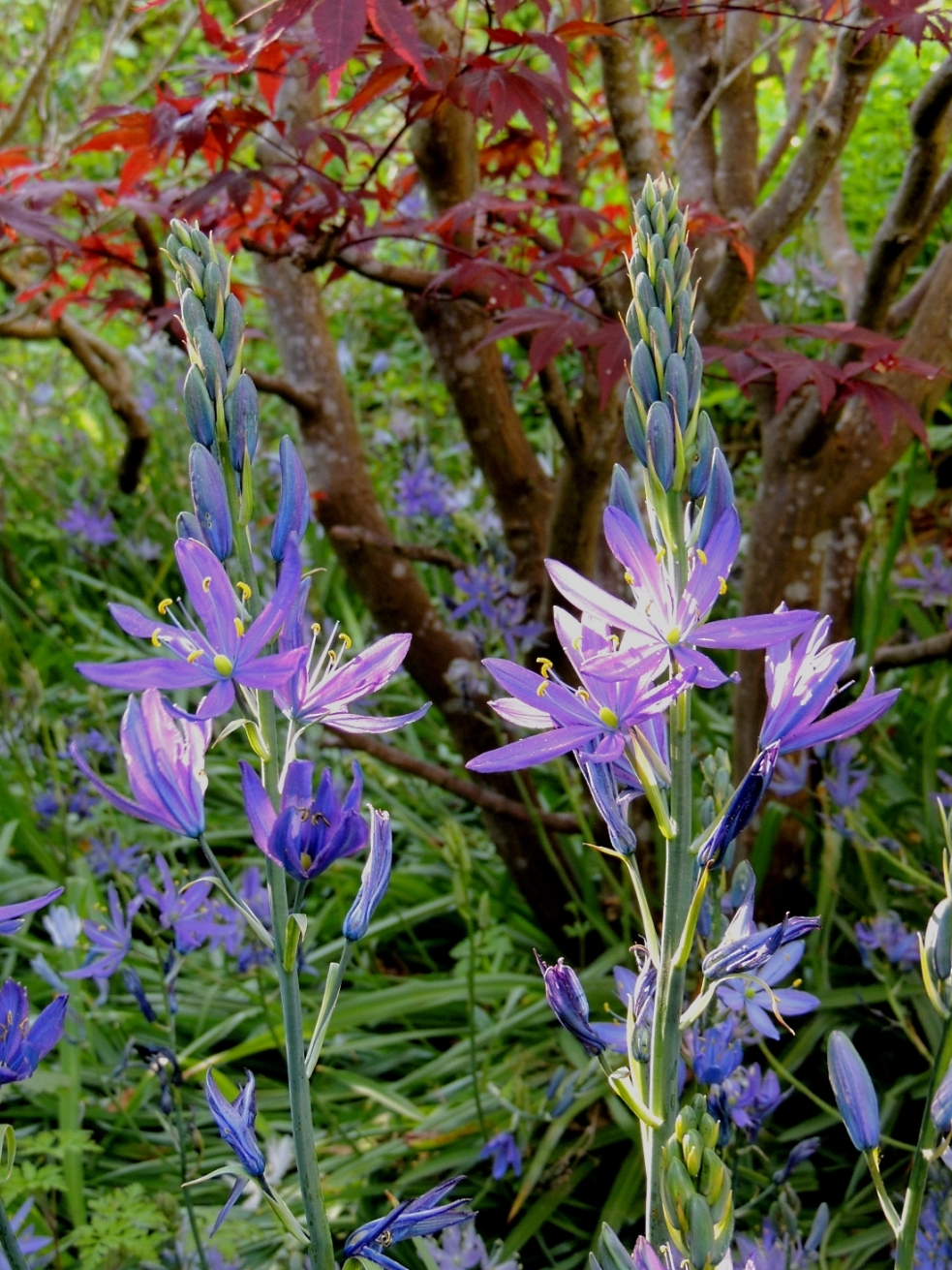
But, close in colour, though again an unknown variety, that I got as a cutting from Jardin d’Antin nearby to us- is the plummy, purply, blue of this statuesque Penstemon- the orange background kindly donated by the spreading branches of the unknown orange Abutilon.
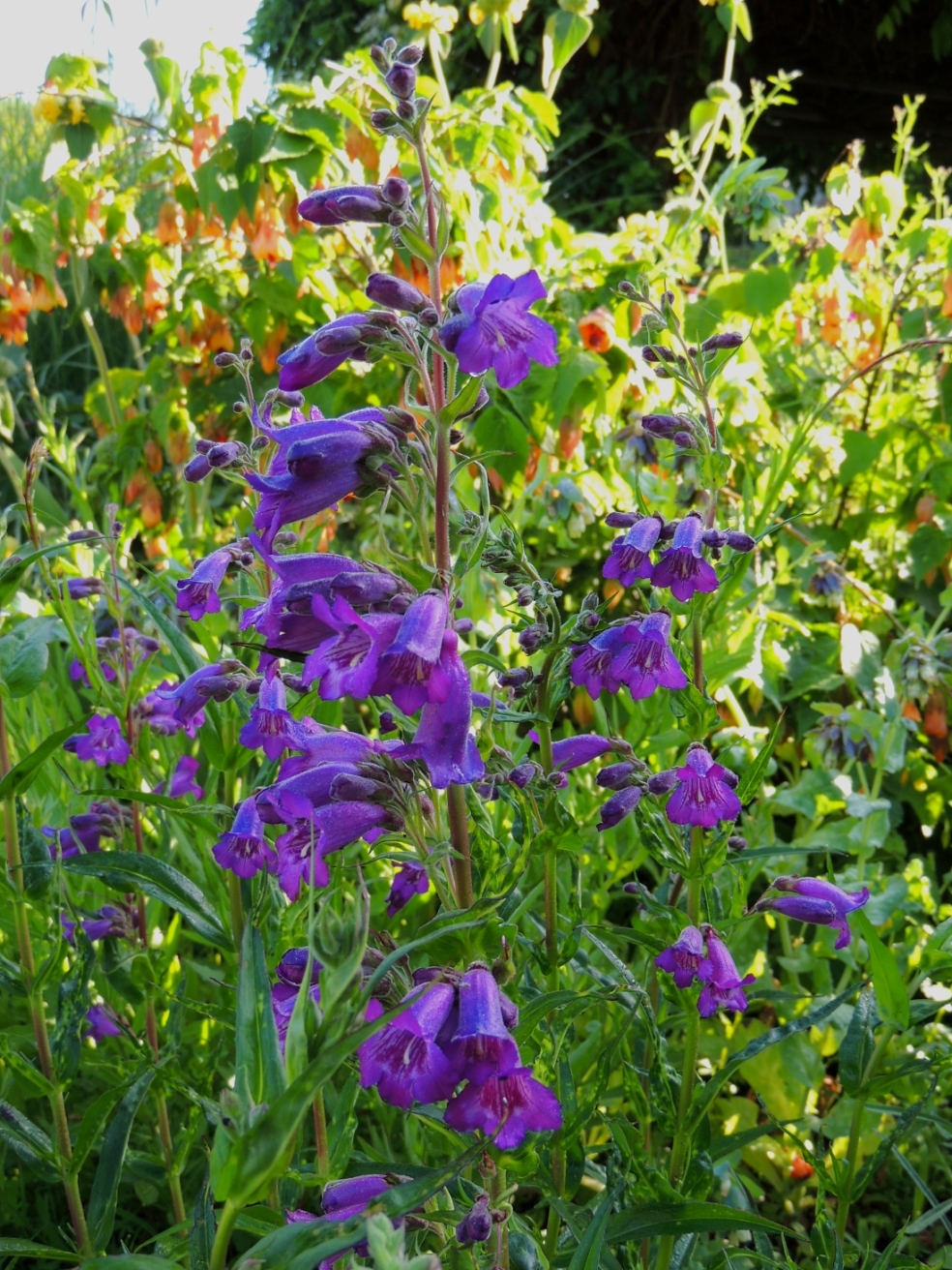
A week ago, I was talking about the Penstemon digitalis ‘Husker Red’ and Penstemon ‘Dark Towers’. Here is a photograph of the quieter, less-in-your-face flowers of ‘Husker Red’- not creamy in my case, more of a pale mauve I would say, but pretty all the same, and flowering for the first time after growing from seed 2 years ago. I am looking forward to seeing how the plants themselves develop.
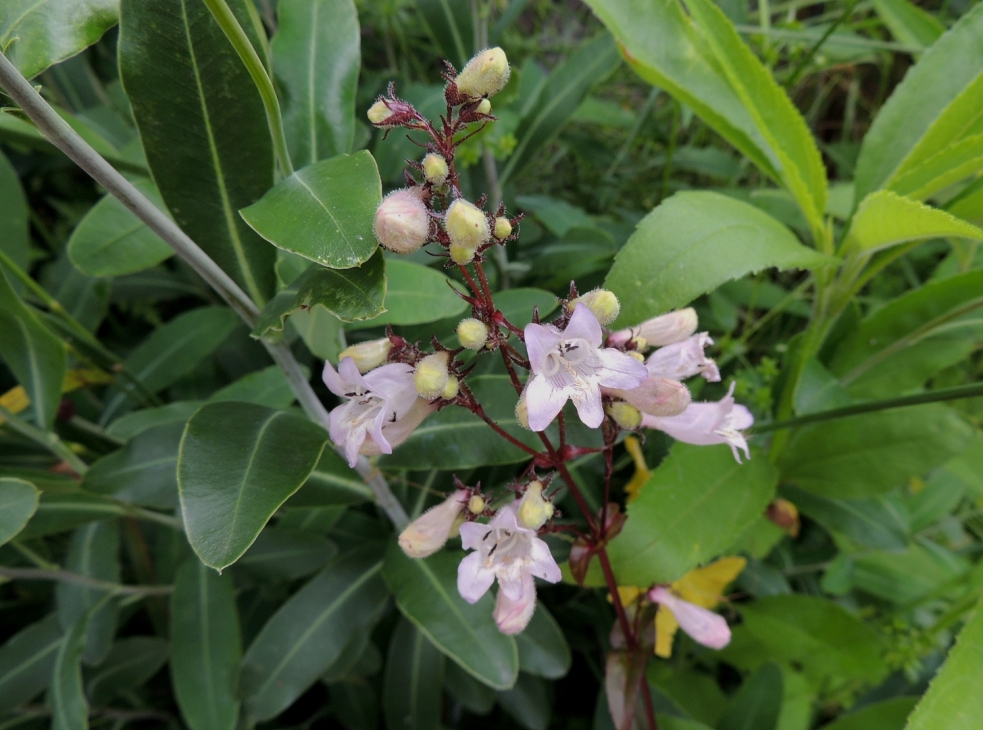
This coral-red Salvia is new to me, Salvia dichlamys. The colouring has that electric quality that you get in the purple-mauve of Verbena bonariensis- it really speaks to you. I shall be very happy to take cuttings later in the summer, and see what happens when brought in for winter.
